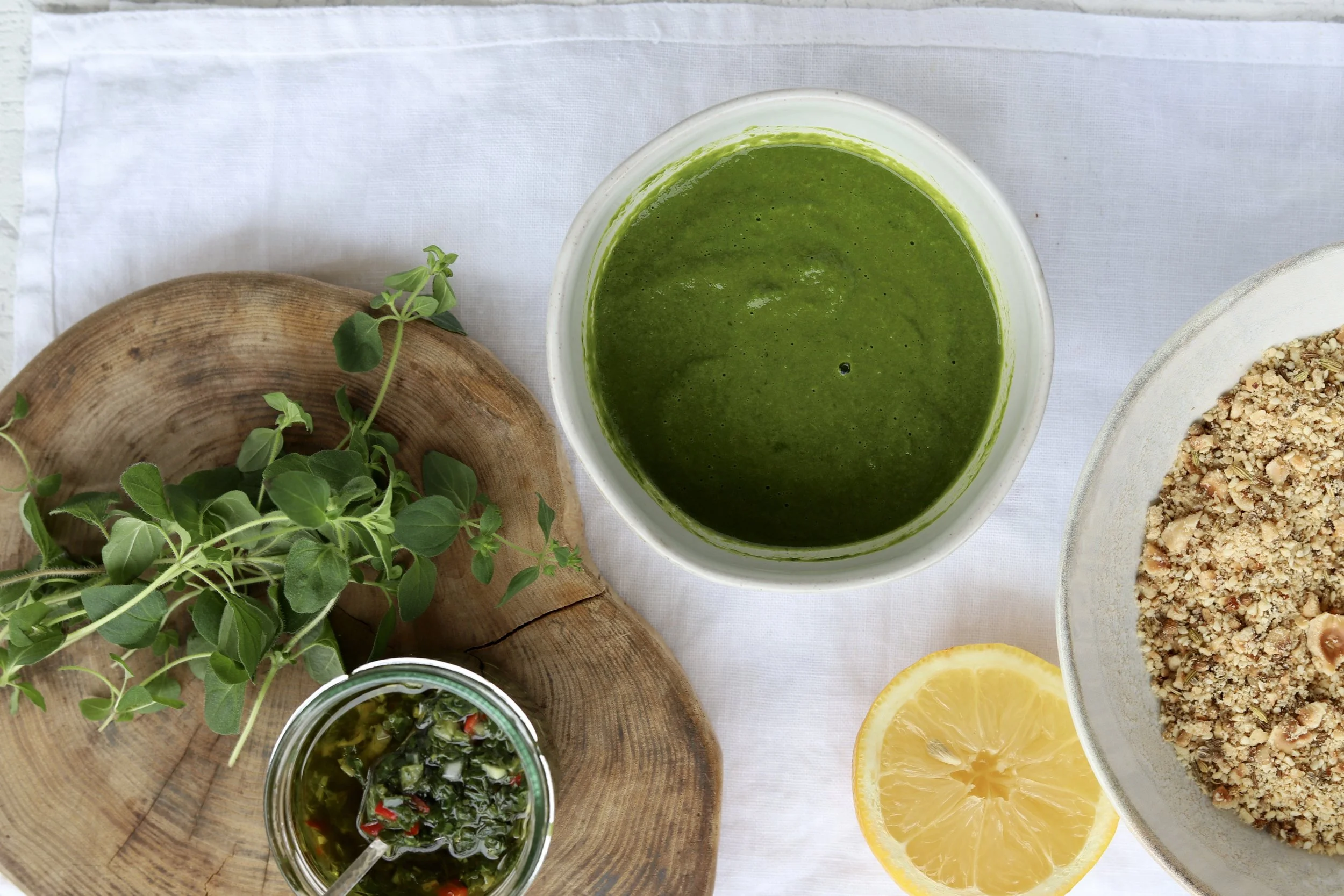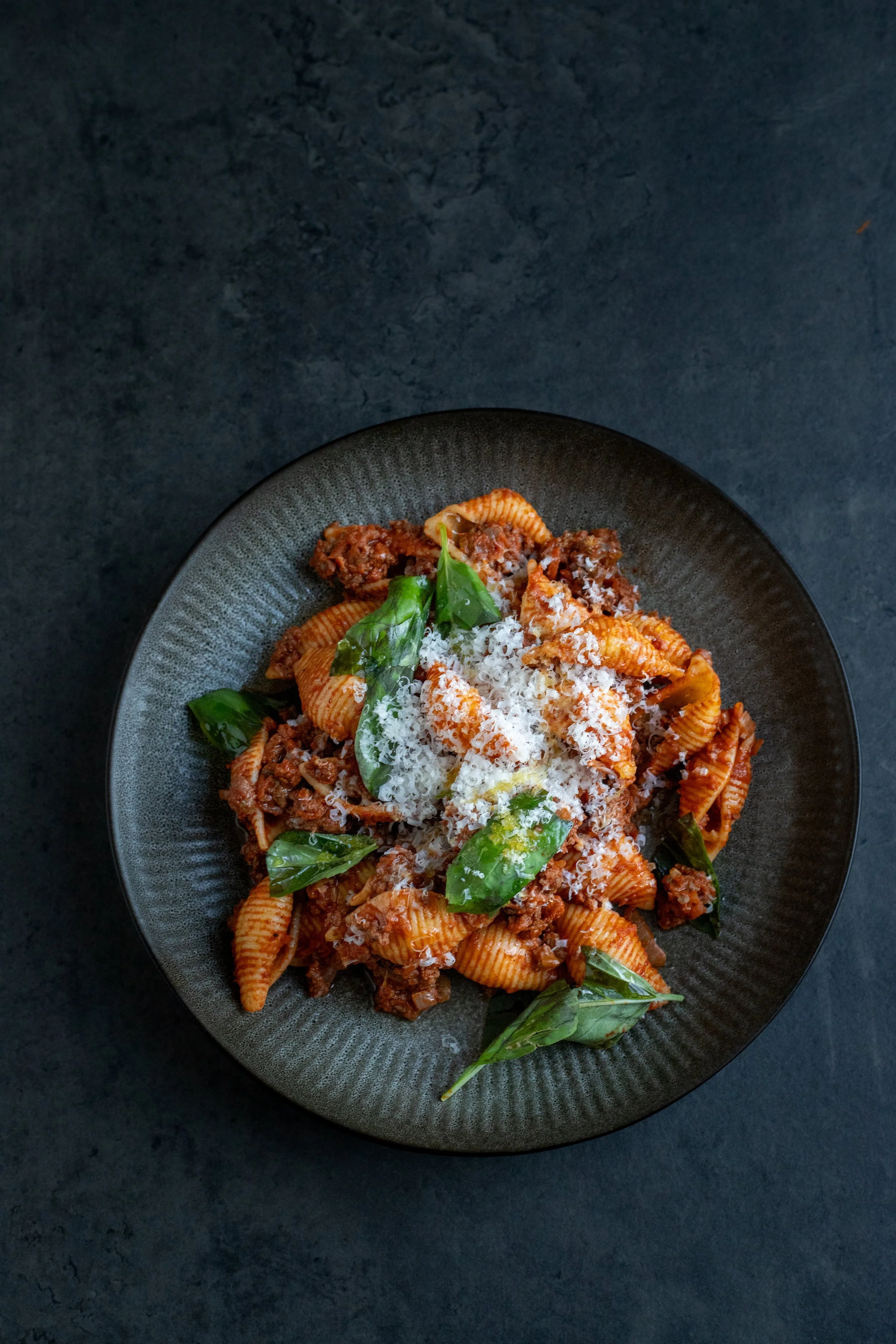Herbs contain a whole heap of useful compounds that may give us a little wellness boost.
Namely:
- Useful antioxidants that may support our overall wellbeing
- Anti-ageing compounds such as apigenin found in parsley
- Nutrients that may support the immune system
- Antibacterial/ Antifungal agents that may support our gut health
The latter is why I recommend this herb paste to many of my nutrition clients.
Herbs such as oregano, thyme and rosemary contain specific compounds that may assist in the breakdown of particularly bloatey gut microbes.
Overall, this herb paste is just a tasty herb salsa/ pesto-type of condiment but with a side of goodness.
Use it like a condiment on top of food, 1 tablespoon at a time.
Ingredients:
Ideally, use all organic herbs since organic herbs are higher in antioxidants and gut-health supporting bioactive compounds.
1 bunch of parsley
1/2 a bunch of basil
1/3 of a bunch of oregano - you may need to reduce this quantity if the flavour is too strong
The leaves from 3-4 sprigs of thyme
The leaves from 2 sprigs of rosemary
The juice of 1 organic lemon
The zest of 1/2 an organic lemon - this must be organic. If you can't get organic lemons, then just use the juice but not the rind. (Non-organic lemons are coated in chemicals which aren’t useful to us.)
A generous pinch of sea salt
Extra virgin olive oil - a good quality fat is needed to help the absorption of those useful compounds
Method:
Wash and roughly dry the herbs.
Put the herbs, lemon juice and rind and salt in a blender.
Pour in a splash of oil and blend.
Add enough oil and blend to achieve the consistency of a slightly looser pesto/ salsa.
Storage:
Store in an airtight container in the fridge.
The mix will keep fresh for 3 days, after which a new batch needs to be made.
Freezing the mix in an ice cube tray also works.





